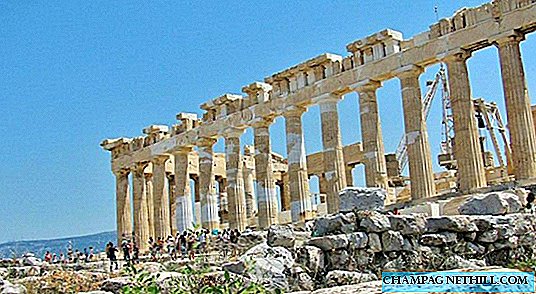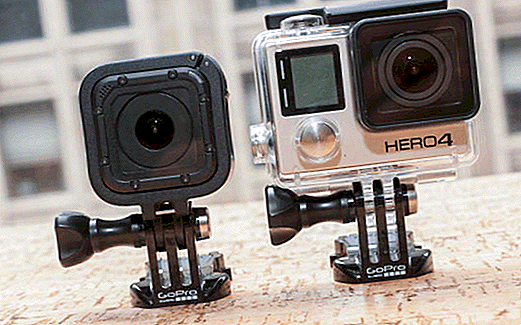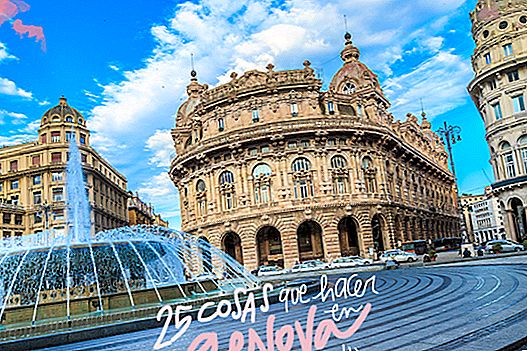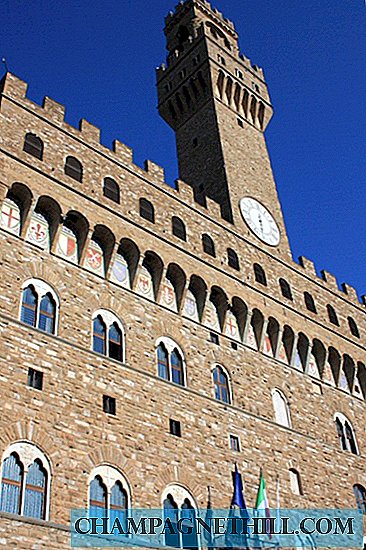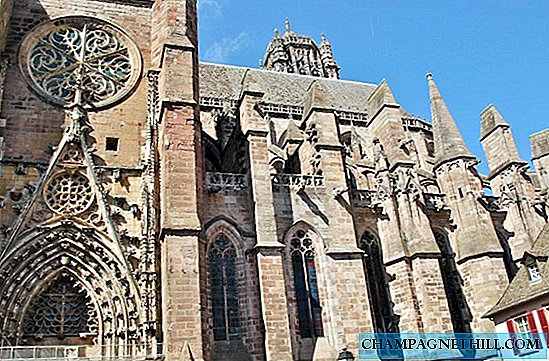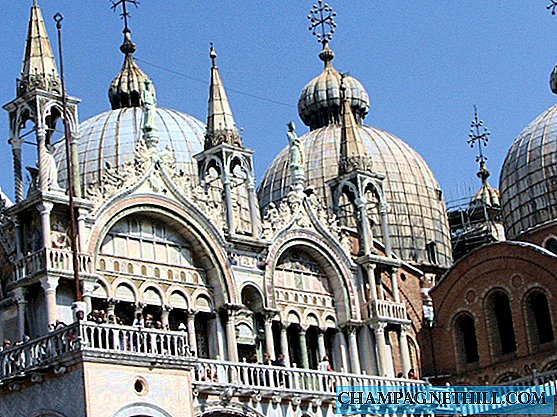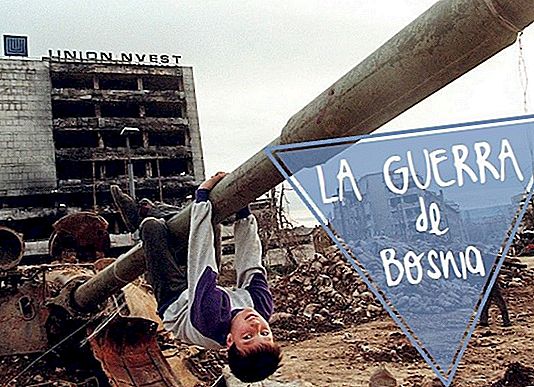Talking about the Bosnian war is not an easy task. We have read a lot and we have been informed and interested ... but the more we know, the more complicated it is to understand the events. The aim of this article is to try to tell you as clearly as possible why Bosnia lived one of the most terrible wars in recent history.
PRECEDENTS: LA (EX) YUGOSLAVIA
- Yugoslavia was a federation of states that formed after World War I. After World War II and under the leadership of Marshal Tito, Yugoslavia was made up of 6 countries: Slovenia, Croatia, Bosnia and Herzegovina, Serbia, Montenegro and Macedonia.
- In 1980 after Tito's death (which some consider him a dictator, but many describe as the man who knew how to bring peace and good times to the people) several nationalist movements begin to demand a change in the Yugoslav federation: they start talking about a 'Greater Serbia' on the one hand and of 'Independence' for another…
- All this led to the beginning of the Balkan War: Slovenia was the first, in 1991, to proclaim itself independent,after the 10-day war, a quick and bloody war, he succeeded. The motives? Substantially 3: the federation was not interested in fighting with a country that was on the side of Western powers such as Italy or Austria, the territory was not very large and above all ... the ethnic mix was practically nil.
- After the proclamation of independence from Slovenia another country requested his departure from the Yugoslav Socialist Federation: Croatia. In this case the war would be longer and cruel. On one side the Croatian Army was trying to proclaim its independence and on the other the JNA, the Yugoslav People's Army that claimed Croatian territories with a majority of population of Serbian origin.
- At the end of the dream of a united Yugoslavia, the Serbian nationalist leader (Slobodan Milosevic) and the Bosnian Serb (Radovan Karadzic) decided that the project of a 'Greater Serbia' would see the light and that where there was a Serbian, there was homeland. It was when everything started to collapse ...

That was Yugoslavia until 1991 ...
BOSNIA AND HERZEGOVINA: BEFORE THE WAR
Bosnia and Herzegovina was always a particularly complex and at the same time absolutely tolerant state. Simply stroll through its capital, the sadly famous Sarajevo, where mosques, orthodox churches, synagogues and Catholic churches live together in a few blocks. In Bosnia and Herzegovina they lived peacefully Bosniaks (Muslims), Serbs-Orthodox and Bosnian-Croats (Catholics). In the 1991 census these were the percentages of the population: 43.7% Bosniaks, 31.3% Serbs-Orthodox, 17.3% Bosnian-Croats, 5% others.
INDEPENDENCE OF BOSNIA AND HERZEGOVINA
After the declaration of independence of Slovenia and Croatia, 2 Bosnian leaders (a Bosnian and a Bosnian-Croatian) thought it convenient to hold a referendum to know whether or not the people were in favor of independence. The leader and all Serbo-Orthodox deputies, opposites, decided to leave parliament in protest and boycott the referendum, which was finally held on March 1, 1992 with a 67% presence (and an overwhelming 99.43% in favor of independence).
On March 5, 1992 Bosnia and Herzegovina declared itself independent against the will of the Serbo-Orthodox part of the country, which had threatened Bosniaks and Bosnian-Croatians who, if they finally declared independence, would occupy 49% of the country's territory. That's how it went: March 7 was born Srpska Republic (Republic of Serbs). It would have been easy to leave things like this: one part of the independent country and another part fulfilling the dream of Greater Serbia. Things, however, are never easy ... especially in a war: one of the darkest conflicts in modern history began ... the Bosnian War.
THE FIRST VICTIMS OF THE CONFLICT
The first victim of the war is something that does not agree with either side:
- For the Serbs, he was the father of a boyfriend who, during the celebration of the wedding in Sarajevo, kept kissing the flag of Serbia and shouting nationalist slogans. A Bosniak (Muslim) began to argue with him and ended up killing him. It was March 1, 1992.
- For the Bosniaks, the first victim of the conflict was Suada Dilberovic, a girl marching in a demonstration against the impending war and who received a flurry of shots from Serbian snipers. It was April 5, 1992, the day on which Europe supported the independence of Bosnia and Herzegovina.
THE WAR OF BOSNIA: THE SARAJEVO ASEDIO
After the referendum and the proclamation of independence of Bosnia and Herzegovina, the new government ordered the JNA (Yugoslav People's Army) to withdraw to Serbia. Nevertheless He decided to stay and enlist among the ranks of the newly formed VRS (Army of the Republika Srpska) and follow the orders of his commander, the cruel, Radla Mladic. In April 1992 the war was absolutely inevitable and Sarajevothe hottest point: the city suffered a siege that lasted from April 5, 1992 to December 14, 1995 . The VRS blocked the roads, isolated Sarajevo and bet on the hills surrounding the city willing to kill any enemy that did not give up. Electricity, water, food and medication sub-minister were cut. The city was alone, surrounded by snipers and abandoned to its fate. His only defense was the Bosnian army which, although in number matched the Serbs, suffered an arms embargo and barely managed to maintain control of the city.
Sarajevo was living his worst nightmare: winter was coming and the shout 'Pazite, Snajper!' (Beware, sniper) was the daily bread of a city that was literally starving. During our visit to Sarajevo we were able to take part in a tour (super advisable) that explains closely how everything happened. Dice, our guide, told us that during the first time of the war, when there was no food, people came to eat soup made with mossy stones (the only 'food' with vitamins there were). Despair was growing more and more: the VRS began to bombard the city (parliament, mosques, churches, the headquarters of the Oslobođenje newspaper, the Vijećnica - the current Town Hall - which kept thousands and thousands of historical books of Bosnia between its walls ...) . The attacks against civilians also began (sadly famous was the attack on the Markale market, where a bomb killed 68 people and left 114 injured, but there were no attacks on hospitals and other barbarities such as systematic violations and killings).

Photo credit: ODD ANDERSEN / AFP / Getty Images
Most of the soldiers that formed the ranks of the VRS were low-profile men who had been brainwashed with the idea of a 'Greater Serbia' that was to defeat the 'Turks' (the Bosniaks) before these would revolutionize and kill all the Serbs. The Serbian propaganda sold as 'Islamic fundamentalists' some Muslims who ate pork and drank alcohol (most Bosnian Muslims are by family inheritance: in the past, when the Turks arrived in Bosnia, a large part of the population became simply because the Muslims paid almost null fees, while Catholics and Orthodox had to pay 10 times higher rates.)
Many of the Serbian soldiers spent their days drinking and shooting civilians as if it were a game (there were those who bet on killing a large number of children, who wanted to see how many men could kill with the same shot, who was dedicated to rape women in the villages ...). Come on, the Bosnian War was one of the pages of humanity that has needed more blood to be written.

Photo credit: Wikipedia
Many believe that the victims of the war were only the Bosniaks. It is not true, a fact is key: only in Sarajevo 35% of the marriages were mixed, this means that the Bosnian Muslims not only lived next to Bosnian-Serbs (Orthodox) and Bosnians-Croats (Catholics) but in In many cases a family was formed by the father of one ethnic group, the mother of another and the grandparents of another.
THE SARAJEVO TUNNEL
In mid-1992 the UN arrived in Bosnia to try to protect and help the inhabitants of Sarajevo and the occupied areas. His greatest success was to make the Serbs give them the Sarajevo airport control, from where planes arrived and left with humanitarian aid. Another great fact brought some hope to the city: in 1993 a tunnel that passed under the airport and allowed the entry of food, medicine and weaponsfrom the mountains outside Serbian control to the city. Getting to the beginning of the tunnel was a risky venture, you had to cross the endless 'Avenue of snipers', named for being an easy target to have several unprotected crossings. Hunger, however, was stronger than fear, and the Sarajevo tunnel saw thousands of people passing through its narrow corridors struggling to stay alive.

ETHNIC CLEANSING
Possibly the difference between the wars of Slovenia and Croatia with respect to that of Bosnia was in the distribution of the population. I explain myself: in Slovenia there were almost no Serbs, therefore, after the declaration of independence and a quick and bloody war, the issue was stride. In Croatia, being a territory with a higher percentage of Croatian Serbs in the population, the war lasted longer and had a fiercer force (it was limited to specific areas anyway). In Bosnia the war was bloody and brutal because there were no clear ethnic territories: all were mixed with everyone and it was difficult to decide who an area was. The solution? Ethnic cleansing.
The ethnic cleansing It was the most horrible face of a war that should never have been real. The objective was to 'clean' an area forcing the inhabitants of an ethnic group to leave. If they resisted they were tortured and killed. The purpose was to be able to create 100% ethnically pure states. Each cultural and religious symbol was also removed: places of worship and cemeteries were demolished mercilessly. The most famous case was the Srebrenica genocide, where some 8,000 Muslims were killed.

WHERE WAS THE REST OF THE WORLD?
This is the question that rumbles most in our heads:Where was he in the rest of the world while Sarajevo - and Bosnia - were living hell? Not only was the international aid (removing the humanitarian) misera, but as a macabre joke an arms embargo was established on the Bosnian government: more weapons were said, more blood. But ... was the best solution to leave the inhabitants of Sarajevo under enemy fire, as if the city were a huge mousetrap? It was Bill clinton who stepped forward to help Bosnia when, After the Srebrenica genocide, he decided to send NATO troops that began bombing Serbia, the base for the end of the war ...
THE END OF THE WAR: REASONS
The Bosnian War had no victors. The conflict ended substantially for 3 reasons:
- NATO began bombing Serbia after the Srebrenica massacre (many Bosnians believe that Srebrenica was handed over 'by its own government since NATO needed a' compelling 'motive to be able to act against Serbia ... as if everything that had happened until that moment was not enough!)
- The Bosnian Serb soldiers after years of war without seeing their dream of a united Great Serbia fulfilled were sunk in depression, felt betrayed by their leaders who promised them a prosperous nation and began to tire of a 'game' that was lasting too long.
- There was no ethnic cleansing left to do: many believe that Serbia's surrender was really a 'fulfilled objective'.

BOSNIA AND HERZEGOVINA AFTER THE WAR
On November 21, 1995, in Dayton (USA)Alia Izetbegovic (president of Bosnia), Franjo Tudjman (president of Croatia) and Slobodan Milosevic (president of Serbia), signed a peace agreement that, on December 14, 1995 was confirmed in Paris.
With the Dayton treaty, Bosnia was divided into two parts (the Republika Srpska with 49% of the territory where Bosnians-Serbs live and the Croatian-Muslim Federation (Federation of Bosnia and Herzegovina) with 51% of the territory, divided into 10 cantons, where Muslim Bosnians and Croatian Bosnians live without mixing. If the Dayton treaty allowed the end of a war, it was not helped so much to favor an integration of the 3 parties involved: in Bosnia peace was (and is) a peace without conviction and the country was transformed into a Frankenstein state. This was the impression we got: On the one hand there are the Serbs with their Republic of Srpska, of nationalist stamp (full of flags of Serbia, with Cyrillic alphabet ...) that do not lose hope that Europe will accept them as an autonomous state. On the other hand, Bosnian-Croats do not end up in the Bosnian-Muslim federation while Bosnian-Muslims, those who suffered the most from the horror of war, They fail to forget everything that has happened or look to the future.
Today in Bosnia there are 48% Bosniaks, 32% Serbs, 14% Croats and 5% of others.ethnicities. The difference from the beginning of the war is that Each group lives geographically separated: if before everyone lived with everyone, today the separation is evident. In the Republika Srpska for example 97% of the inhabitants are Serbs (before the conflict were 54%), in the Croatian-Muslim Federation, Bosniaks are 73% (before they were 52%).

There is 3 big problems in modern Bosnia:
- The corruption (We live it in first person 'thanks' to some police of the Republic of Srpska' ... we will tell you the story).
- The (almost) null meritocracy: It is one of the reasons why a large part of the young population of Bosnia leaves the country in search of a better (and fairer) future.
- The constitution obliges citizens to define themselves in one of the 3 main ethnicities (Bosniaks: Muslims; Bosnian Serbs: Orthodox; Bosnian Croats: Catholics). The others (Jews, gypsies ...) are left out: they cannot, for example, present themselves to official positions such as the deputy or president of the republic.

THE NUMBERS OF WAR
- 35,000 buildings were totally destroyed in Sarajevo and virtually all were damaged.
- The city recorded about 330 impacts of bullets a day.
- The record was recorded on July 22, 1993, when Sarajevo received 3,777 projectile impacts.
- During the war more than 20,000 Bosnian women and girls were raped by Serbian troops, and in some cases transformed into sex slaves and tortured for months. The result was the so-called 'children of war', born of a Bosnian mother, raped by Serbian soldiers. On this subject we advise you to read the book 'The most beautiful word' by Margareth Mazzantini. While most of the rapes were from Serbs to Muslim Bosnias, there were also cases of violations of Orthodox Serbs by Bosnians.
- In Sarajevo there are almost no parks left: all have been used, during the siege, as cemeteries to bury the dead.
- In total, in Sarajevo, the victims of the war were 11,541. More than 1,600 of the victims were children.
- In Bosnia, the victims of the war were about 200,000 (more than half of the victims were civilians).
- There were about 30,000 missing and in the years following the end of the war about 300 mass graves were discovered (in 90% of the cases, the victims were Bosnian Muslims)
- There were more than 2,000 victims of amputations.
- The refugees and exiles were more than 1,000,000.
- 1,425 days were those that Sarajevo spent under siege.
Well, we know that this post has been a monumental tostón, but it was something that after having visited the country we could not share. There is much ignorance about the Balkan War (and especially about the Bosnian War) and we hope we have been able to clarify some doubt. It remains only to wish that the horror lived in Bosnia could be a warning for the future, although it seems that the ability to not learn from the mistakes of the past is in the human condition ...

Recommendation: We did a super interesting tour that clarified quite well everything that happened during the Bosnian War. It lasts about 4 hours and passes through several fundamental points of Sarajevo during the conflict (Hotel Holiday Inn, Avenue of the Snipers, Markale Market, Tunnel of the Peace) and also by the Olympic zone (bob tracks, nowadays full of graffiti) and a viewpoint in the mountains from where you can see all Sarajevo (and understand how easy it was for snipers to shoot at civilians). More info here.

